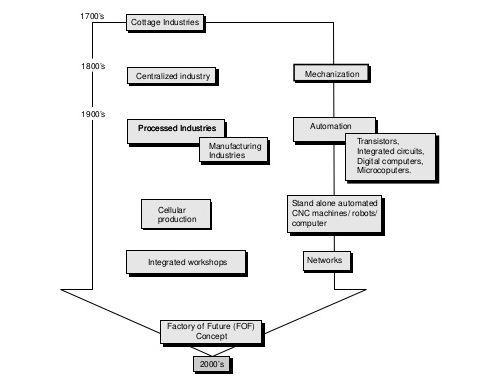Equipments And Innovations In Flexible Manufacturing Systems - Steering Which Drives The Vehicle.
Feb 18, 2019 • 11 views
Equipments and Their Functions Required for an FMS :
The two importantequipment’sof FMS are:
1.Primary equipment:
It adds value to the piece parts being manufactured. It consists of work centers, which physically machine a piece part, and process centers, which assemble, check or wash, etc. the piece parts.
2. Secondary equipment:
It is used to support the primary equipment in achieving this goal. It consists of support stations such as pallet/fixture load-unload stations and tool commissioning/setting area, etc.
It also consists of supportequipment’ssuch as robots, pallet/fixture/stillage stores, pallet buffer stations, tool stores, raw material stores, transport system (AGVs, RGVs, robots) for tooling and piece parts, etc.
Innovations that have Advanced the Manufacturing Industries :
In the year 1700 this have been used by the cottage industries. In about 100 years after that in the year 1800 it was used in the centralized industry.
The technology got advanced and mechanization got. In the year 1900 processed industries got a new beginning in the manufacturing industries. Cellular production and standalone automated CNC machines/ robots/ computer.
In the year 2000 the concept came FACTORY OF FUTURE CONCEPT.

Area of Application of a FMS in Industry :
Tertiary industries have a large number of branches such as services, process and manufacturing. Again the service is subdivided into banking retail and transport. In process chemical food and etc.
Manufacturing is divided into production, planning, and technical services, planning have sub branches like financial capacity production. Production have sub part into job, batch and series Then batch have branches small and large. Similarly series is flexible transfer, transfer line, rotary and linear transfer.

Advantages of FMS Installation :
Faster, lower-cost changes from one part to another which will improve capital utilization
Lower direct labor cost, due to the reduction in number of workers
Reduced inventory, due to the planning and programming precision
Consistent and better quality, due to the automated control
Lower cost/unit of output, due to the greater productivity using the same number of workers
Savings from the indirect labor, from reduced errors, rework, repairs and rejects
Disadvantages of FMS Installation :
Limited ability to adapt to changes in product or product mix (ex. machines are of limited Capacity and the tooling necessary for products, even of the same family, is not always feasible in a given FMS)
Substantial pre-planning activity
Expensive, costing millions of dollars
Technological problems of exact component positioning and precise timing necessary to process a component
Sophisticated manufacturing systems
